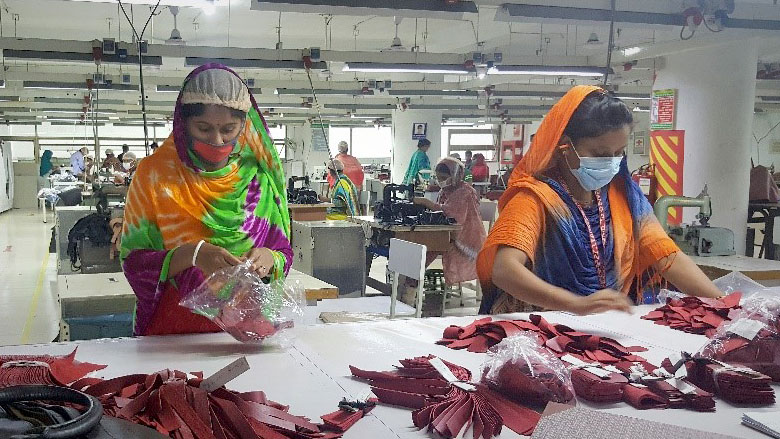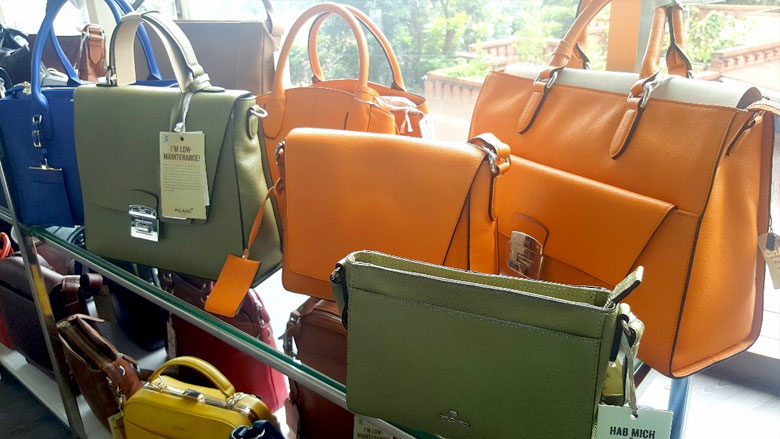“Bangladesh’s achievement in ready-made-garments is remarkable. However, dependence on a single sector for majority of export earnings is risky. To sustain the economic growth amidst current global landscape, we need to improve competitiveness of several other promising sectors to diversify our export basket,” said Md. Obaidul Azam, Joint Secretary of Ministry of Commerce of Bangladesh.
The World Bank Group is actively working with the Bangladesh government to help the country diversify its trade landscape. Light engineering, plastics, leather, and footwear all represent areas of opportunity for Bangladesh’s firms. But to compete on a global scale, companies must improve to meet international standards.
The Bank Group’s work with Bangladesh focuses on four key pillars, outlined in the 2016 Diagnostic Trade Integration Study.
- Break into new markets through improved logistics and better exploitation of regional trading opportunities;
- Break into new products by spurring investment and promoting exports;
- Improve worker and consumer welfare by improving skills, literacy, safety, and safety nets;
- Build a supportive environment with strong macroeconomic fundamentals and strategic policy making.
“Implementing these changes could establish export-led growth in Bangladesh with multiple sources of strength beyond garments,” says Esperanza Lasagabaster, South Asia Practice Manager for the World Bank Group’s Trade & Competitiveness Global Practice. “This would improve the overall competitiveness of the economy and provide sources of strength other than low wages.”
“The ultimate goal of this strategy”, according to Lasagabaster, “is continued poverty reduction and enhanced welfare for Bangladesh’s citizens.”
The Export Competitiveness for Jobs project is one example of the Bank Group’s activities in Bangladesh aimed at diversifying trade. With $100 million in financing, the project aims to create nearly 100,000 direct jobs outside the ready-made-garments sector in the coming six years.
“It’s never good for any country to be entirely dependent on a single source for its exports,” says Michael Engman, Senior Economist with the Trade & Competitiveness Global Practice and project lead. “The government of Bangladesh wants to diversity its export base naturally to create more jobs. We hope to learn from the success and shortcomings of the garment sector to inform progress in other areas.”
Manufacturing sectors other than garments are beginning to grow more quickly in Bangladesh, adding about 300,000 jobs annually since 2010. Light manufacturing sub-sectors, which are labor intensive and employ women, have expanded employment by 4.3% annually since 2010. The Export Competitiveness for Jobs project will build on this momentum and help increase the number of firms directly exporting in four targeted sectors:
- Electronics: 2,500 firms employ 70,000 workers;
- Plastics: Around 3,000 firms employ 63,000 workers;
- Footwear: 2,500 firms formally employ 75,000 workers and engage up to 900,000 people indirectly;
- Leather: 3,500 firms formally employ 558,000 people and indirectly engage another 300,000.
In all of these sectors, Bangladesh has a comparative advantage, but faces constraints, such as a shortage of skills, need to upgrade technology, weak infrastructure, or difficulty meeting international standards and compliances, according to Engman.
“A lesson from the garments sector is that it is no longer enough to compete on low wages alone,” says Engman.
By establishing four technology centers in Dhaka, Chittagong and Savar, Engman says the Bank Group wants to help firms in these sectors raise productivity and improve quality standards. The project will also support firms to meet environmental, social and quality standards required to access international markets.
These technology centers will combine vocational training, diploma and degree tracks, management training, and resources for small firms who lack access to specific machines or know-how. Similar types of centers exist all over the world, but these would be the first in Bangladesh.
To grow faster, provide more jobs, and continue its pace of poverty reduction, Bangladesh needs to build on its strong track record and improve on it. Projects like the Export Competitiveness for Jobs will be critical to Bangladesh’s future success, says Lasagabaster.


